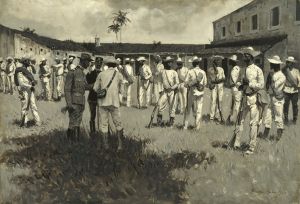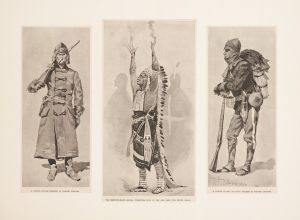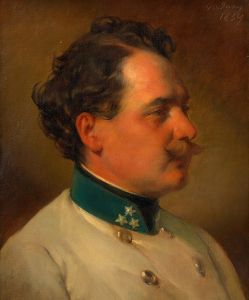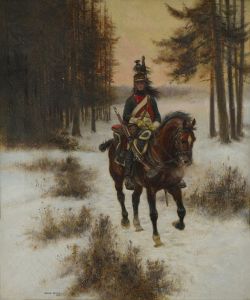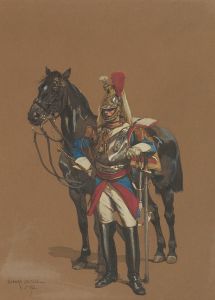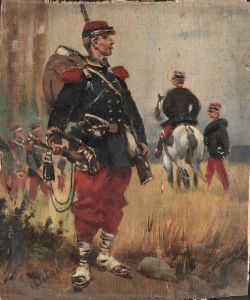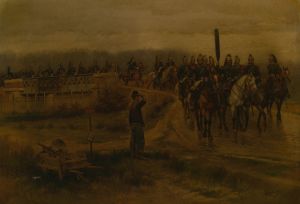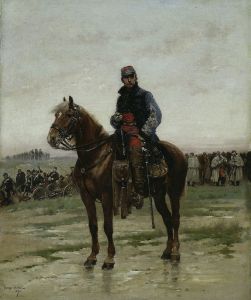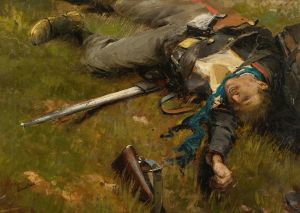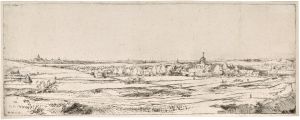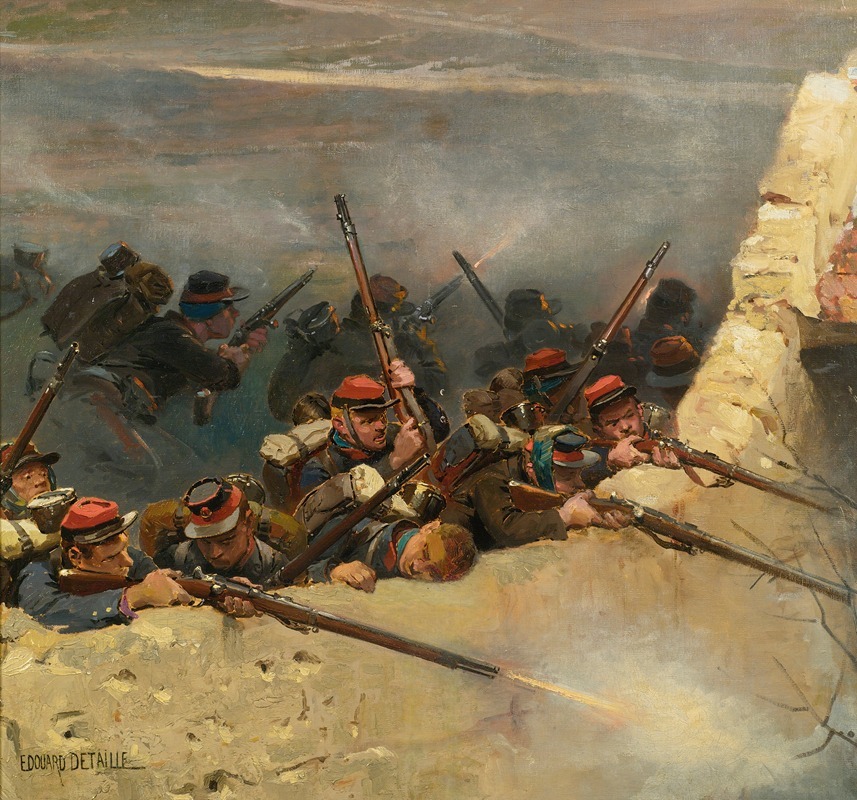
Embusqués Derrière Un Mur. Fantassins De La Ligne; A Fragment From The Panorama Of The Battle Of Champigny
A hand-painted replica of Jean-Baptiste Édouard Detaille’s masterpiece Embusqués Derrière Un Mur. Fantassins De La Ligne; A Fragment From The Panorama Of The Battle Of Champigny, meticulously crafted by professional artists to capture the true essence of the original. Each piece is created with museum-quality canvas and rare mineral pigments, carefully painted by experienced artists with delicate brushstrokes and rich, layered colors to perfectly recreate the texture of the original artwork. Unlike machine-printed reproductions, this hand-painted version brings the painting to life, infused with the artist’s emotions and skill in every stroke. Whether for personal collection or home decoration, it instantly elevates the artistic atmosphere of any space.
Jean-Baptiste Édouard Detaille's painting Embusqués Derrière Un Mur. Fantassins De La Ligne; A Fragment From The Panorama Of The Battle Of Champigny is a work that reflects the artist's dedication to military themes and historical accuracy. Édouard Detaille (1848–1912) was a renowned French academic painter, celebrated for his detailed and realistic depictions of military life, uniforms, and battles. His works often drew from his personal experiences and meticulous research, making him one of the most respected military painters of his time.
This particular painting is a fragment of a larger panorama created to depict the Battle of Champigny, a significant engagement during the Franco-Prussian War (1870–1871). The battle took place between November 30 and December 2, 1870, near the village of Champigny-sur-Marne, east of Paris. It was part of the French efforts to break the Prussian siege of Paris. French forces, including the infantry units depicted in the painting, attempted to push back the Prussian troops but were ultimately unsuccessful in lifting the siege.
The fragment shows French line infantry, or "fantassins de la ligne," taking cover behind a wall, a tactical maneuver often employed during the battle. Detaille's attention to detail is evident in the accurate representation of the soldiers' uniforms, weapons, and the environment. His work captures the tension and realism of the battlefield, emphasizing the human experience of war.
The painting was originally part of a larger panoramic work, a popular artistic format in the 19th century used to immerse viewers in historical events. Panoramas were often displayed in circular exhibition spaces, allowing viewers to feel as though they were standing in the midst of the depicted scene. Detaille collaborated with fellow artist Alphonse de Neuville on the full panorama of the Battle of Champigny, which was completed in 1882. The panorama was highly praised for its vivid and lifelike portrayal of the battle.
While the full panorama no longer exists in its entirety, fragments like this one provide valuable insight into Detaille's artistic process and his commitment to historical documentation. The painting serves as both a work of art and a historical artifact, offering a glimpse into the Franco-Prussian War and the experiences of the soldiers who fought in it.





